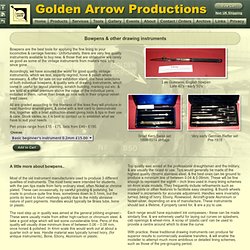

Sprung points - Garden Railway Forum. Make%20Your%20Own%20Miniature%20Plug%20Sets. Making your own wheels - Manchester Model Railway Society. Index of /users/summer/16mmngm/Articles_htms. Reproducing Varnished Teak - Improving Latest Hornby Thompsons - Weathering, Painting & Transfers - RMweb. Every now and then I like to re-evaluate how I produce a varnished teak finish as applied to LNER coaches.
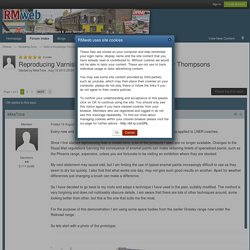
Since I first started reproducing teak in model form, a lot of the products I used are no longer available. Changes to the Royal Mail regulations banning the conveyance of enamel paints can make obtaining tinlets of specialised paints, such as the Phoenix range, expensive, unless you are fortunate to be visiting an exhibition where they are stocked. My next statement may sound odd, but I am finding the use of typical enamel paints increasingly difficult to use as they seem to dry too quickly. I also find that what works one day, may not give such good results on another.
Apart for weather differences just changing a brush can make a difference. So I have decided to go back to my roots and adapt a technique I have used in the past, suitably modified. For the purpose of this demonstration I am using some spare bodies from the earlier Gresley range now under the Railroad range.
Steam Mods, Restorations and Repairs. Colin binnie. Wheel/ Tyre profiles. Hi Martin, thi is how I machined mine.
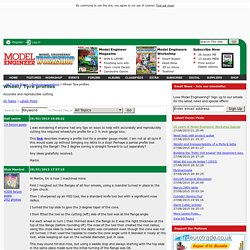
First I roughed out the flanges of all four wheels, using a mandrel turned in place in the 3-jaw chuck. Then I sharpened up an HSS tool, like a standard knife tool but with a significant nose radius. I turned the top slide to give the 3-degree taper of the cone. I then fitted the tool so the cutting (left) side of the tool was at the flange angle. Download the latest version of the easiest model railroad planner here.
Download and try AnyRail for free.
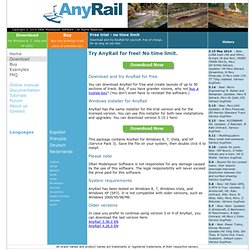
You can download AnyRail for free and create layouts of up to 50 sections of track. TEMPLOT BASE PAGE. Go with the flow.pdf. Holes1. Tinplate Girl. Electrolytic Etching of Brass. Update: I'm often asked about the thickness, type, and source of brass I used for these journals.

I am very lucky to have a local place, Metal Source, were I buy most of my supplies. I used 22 ga. (.025") brass and any alloy will do. In a pinch you can buy brass door kick plates at your local home center, but you will need to strip the lacquer. Loco Detailing. Scratchbuilding model cars page three. Scratch building, page three.

Nuts and bolts, handles and hinges, there are many utalitarian bits and bobs that must be represented on a model, and some of them can be a little tricky. Nuts and Bolts. These items feature all over cars and in all era’s, it’s not magic or faith that holds everything together, so we have to be able to put them on our models. They come in so many sizes that scale matters less than what looks correct, sometimes a small circle cut from rod or a tiny photo etch dot will be enough to fool the eye into thinking there is a nut, our minds often fill in the blanks if we give it enough pointers to follow, and it’s this illusion of reality we are seeking.
Attaching plastic hex’ shapes to your model is straight forward unless you are gluing plastic to resin. Model Car Scratchbuilding How-To album.
Gears and ujoints for scale models. 90 degree drive ideas - Motors & Drive Systems - RMweb. Railmatch Paint. Bogie Coaches. I think it was John Rogers writing in Garden Rail, that said something to the effect that coaches are just boxes with holes in the sides.......
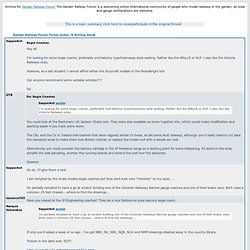
Personally I will be using polystyrene sheet (Plasticard) when I get around to putting bodies on the pass car underframes I've got sitting on the workbench. Wood is OK for goods trucks, but it's a lot easier to get a good finish with polystyrene. It also cuts clean and doesn't splinter. Plus if you are impatient like me, joints are almost instant if you use solvent. Card is generally too thin in large scale I think, but I've never liked using it anyway, even in HO. For large models it gets a bit pricey buying polystyrene sheet from the model shop and the sheets aren't usually big enough for bogie stock.
The track gauge of the original is immaterial as rolling stock size is based on a railway's loading gauge.... Suggestions for the setting out of the vertical position of the fixed fulcrums on a CSB chassis. By Ted Scannell This setting out needs to be done while the frames are still in the flat.

Once drawn, preferably on the inside of the frame, bolt or solder the two sides together, outside to outside, so that any cutting or drilling done is exactly the same for both frames. Bowpens and fine lining tools. Bowpens & other drawing instruments Lee Guinness, English bowpen Late 40's - early 50's Small Kern Swiss set 1898-1914 vintage Very early German Riefler set Pre-1918.
